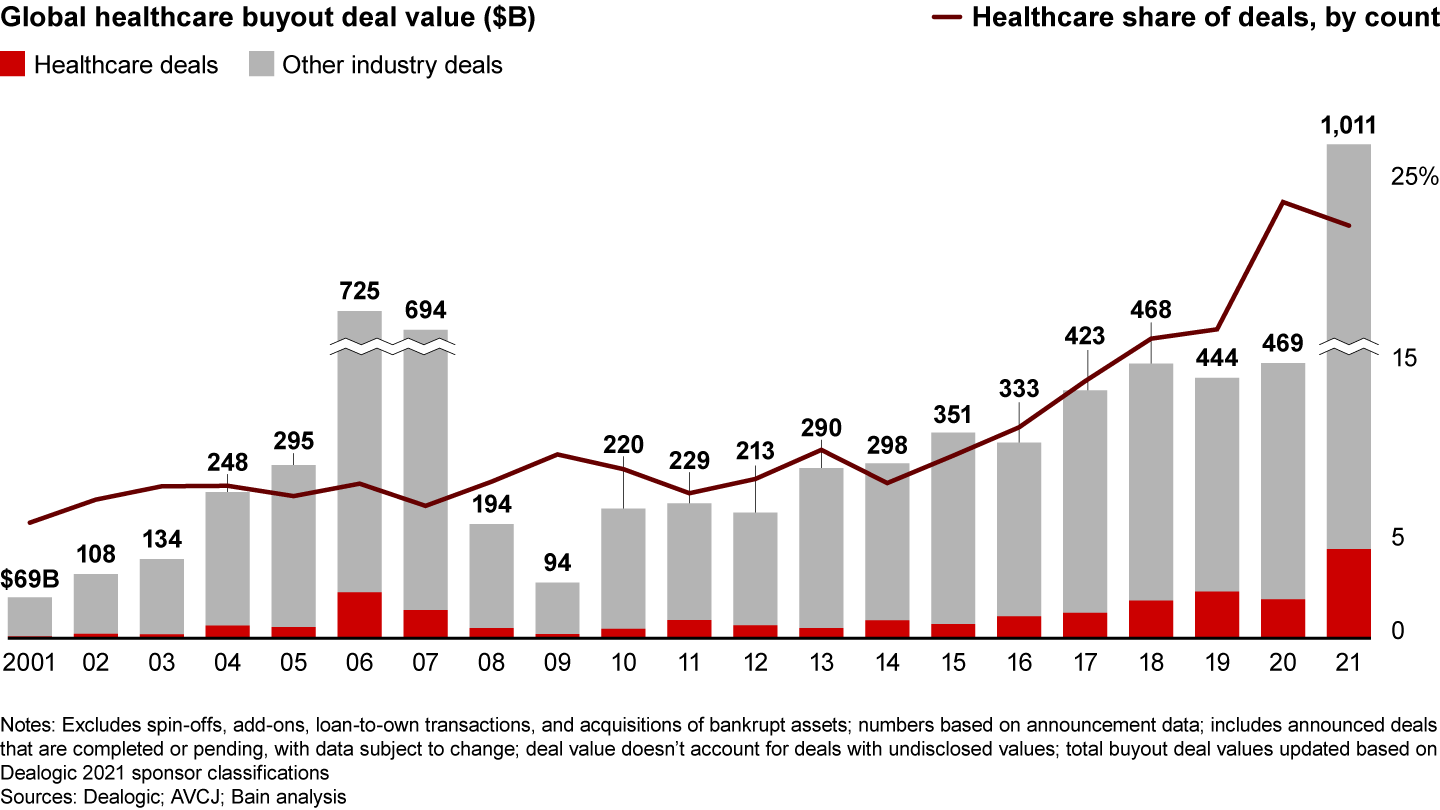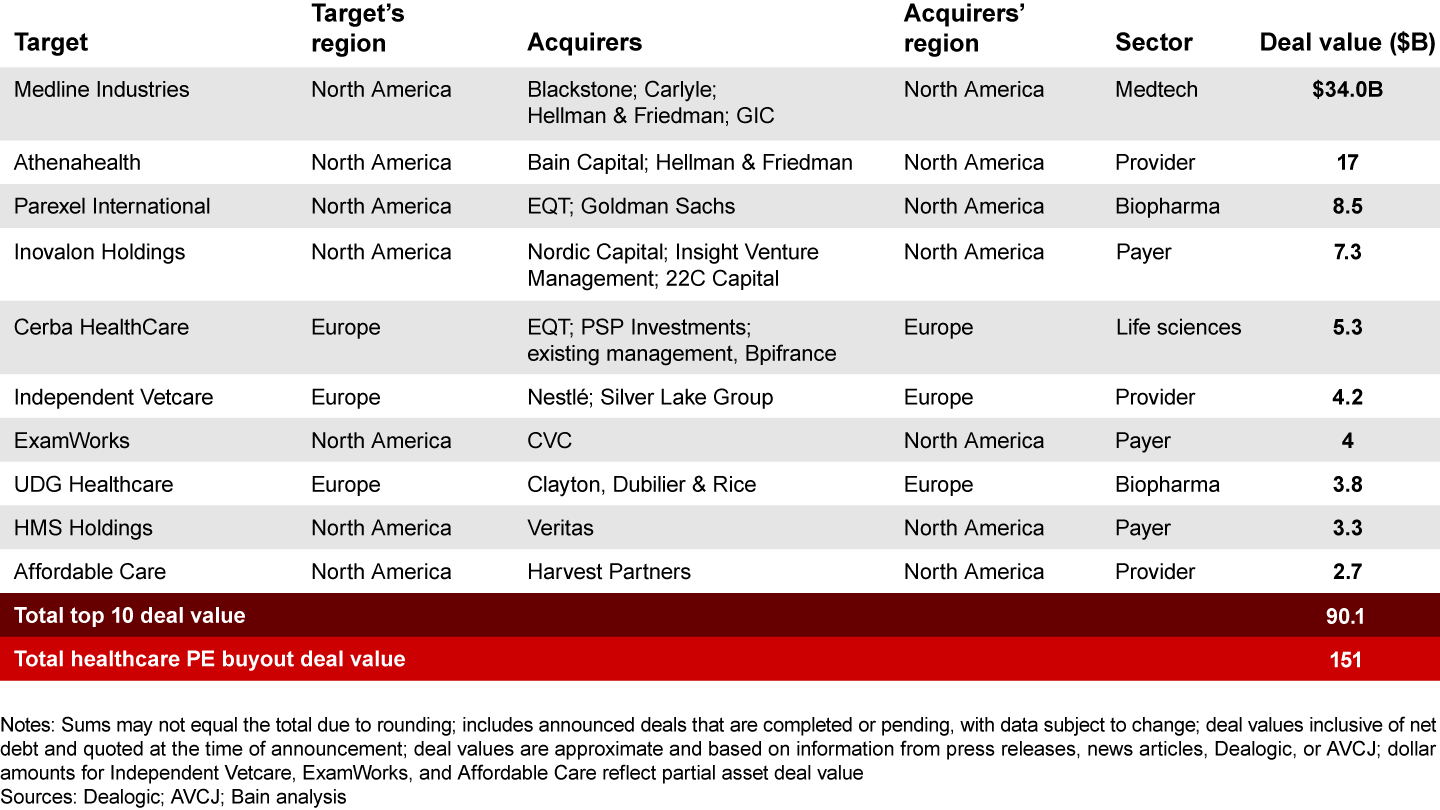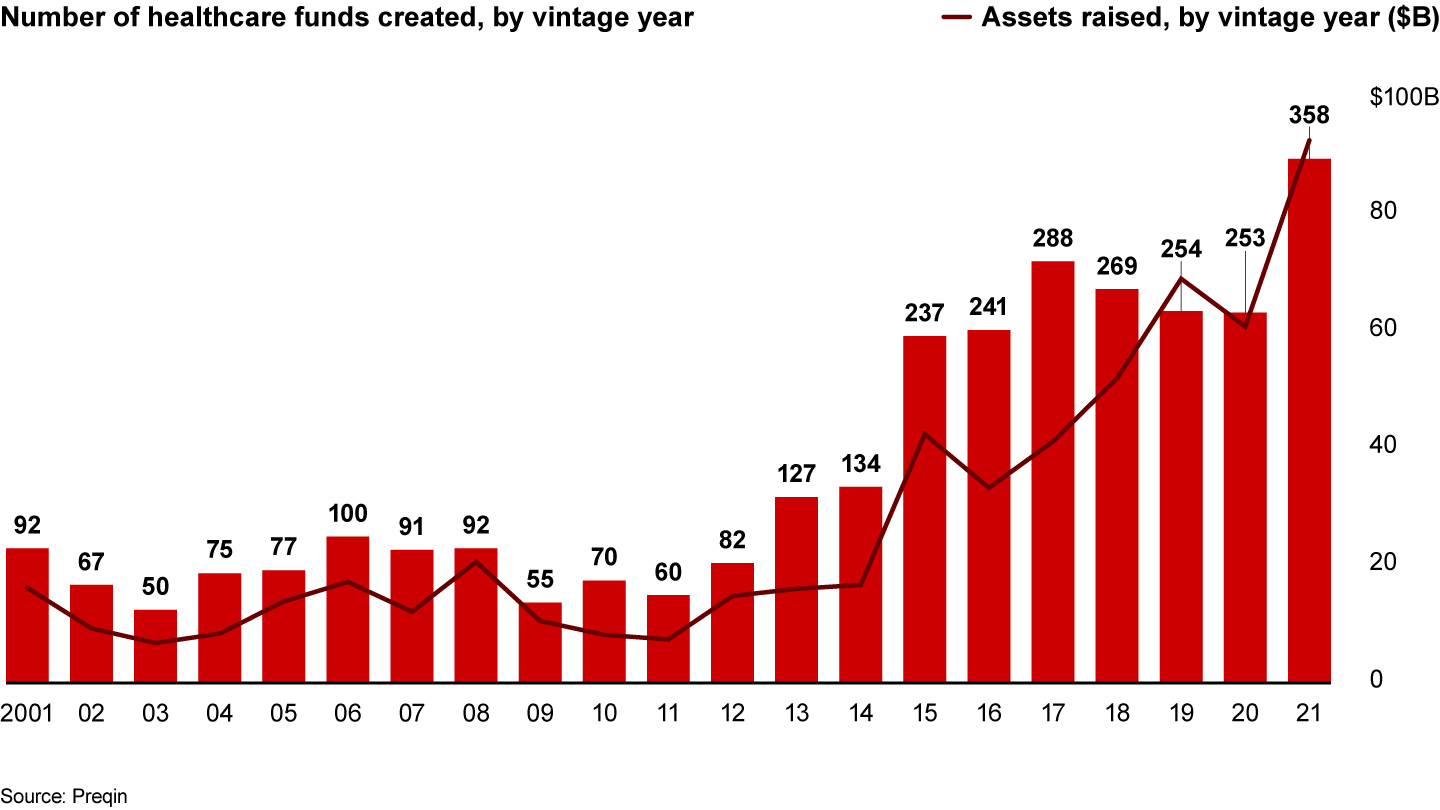Rapport

At a Glance
- Healthcare private equity posted a record year for deal volume and disclosed value, with brisk activity across regions and sectors.
- Megadeals returned, led by the Medline and Athenahealth transactions.
- Competition for high-quality assets intensified as more infrastructure funds, growth-equity funds, and other new sources of capital trained their sights on healthcare assets.
- Healthcare companies benefited from structural trends such as an aging population, the increased incidence of chronic illness, rising income levels, and digital innovations in treatment and operations.
This article is part of Bain's 2022 Global Healthcare Private Equity and M&A Report
In the second year of Covid-19, healthcare private equity activity showed remarkable resilience to the widespread disruption, posting a record year for both deal volume and disclosed value. This stemmed partly from a pandemic-induced backlog of parked deals, as well as the revival of megadeals headlined by the $34 billion Medline deal and the $17 billion acquisition of Athenahealth.
The number of deals rose 36% to 515, up from 380 the prior year. Total disclosed value more than doubled to $151 billion from $66 billion (see Figure 1). The average disclosed deal value soared 134%, mainly because of 5 buyouts greater than $5 billion, compared with just 1 the year earlier.
Moreover, returns for the healthcare sector have remained strong, and valuations reached record highs (see “Healthcare Private Equity Deal Returns: Look to Revenues and Multiples”).
As in 2020, the healthcare provider and biopharma sectors (excluding life sciences) were the most active in 2021. Specialty providers garnered particular attention, having benefited from a rebound in patient volumes for elective procedures.
From a regional perspective, the number of deals over $1 billion almost doubled in Europe during 2021. The Asia-Pacific region, meanwhile, maintained a strong pace after a torrid 2020, with both deal volume and disclosed value increasing.


Healthcare’s pace was similar to global private equity more broadly, which also recovered in 2021. Transactions across all industries increased to 2,277 in 2021, up from 1,586 the prior year, while disclosed deal value more than doubled to $1.011 trillion from $469 billion in 2020 (see Figure 2). As a result, the healthcare sector’s deal volume as a share of total industry deal volume dipped slightly to 23% in 2021 from 24% the prior year. But healthcare’s share of disclosed value nudged higher to 15% of all value from 14%, as many large healthcare deals closed (see “Now Playing: The Return of the Megadeal”).


In North America, uncertainty over patient volumes and profit margins reduced investors’ appetite for risk for several quarters in 2020, particularly for larger assets. But in 2021, the average deal size more than doubled to $1.5 billion.
By 2021, investors once again rallied to find pockets of value and gain confidence in assets focused on the detection and treatment of Covid-19 variants, as well as companies in sectors such as pharma services that can ameliorate the downstream consequences of the pandemic (see “Covid-19 Fallout: Investing to Handle Pandemics Present and Future”).
Increased confidence in the market translated into a greater willingness to pull the trigger on large healthcare deals after a lull in 2020, when the top 10 deals accounted for just 43% of total disclosed value, and only one transaction exceeded $5 billion (see Figure 3). In 2021, as investors were flush with capital, the average transaction size worldwide rose to $695 million, driven up by deals over $1 billion, well north of the previous year’s average $296 million.


As the Covid-19 overhang receded and healthcare looked increasingly attractive, competition for high-quality assets grew fierce. New sources of capital trained their sights on the industry. These included infrastructure funds, as well as more and larger growth-equity and so-called crossover funds (see “Growth Equity Blossoms in Emerging Tech-Related Healthcare Firms”). Competition looks set to intensify following the record number of healthcare-focused funds initiated in 2021, 358, and total capital raised, roughly $93 billion (see Figure 4).
The year also brought a record number of initial public offerings and special-purpose acquisition companies, or blank-check companies, which effectively accelerated the IPOs of several healthcare assets. Corporate acquirers were similarly acquisitive, with volumes rising to 3,205 from 2,766 in 2020, while disclosed value climbed 44% to $438 billion from $305 billion in the prior year.


Finally, several structural trends continued to benefit healthcare companies. An aging population, the rising incidence of chronic illness, rising income levels and healthcare access in emerging markets, and digital innovations in treatment and operational processes combined to boost underlying demand for an array of healthcare goods and services.
Pausing in 2020 was a natural reaction by healthcare investors to a once-in-a-generation crisis. Returning to the field in 2021 also made sense, given the resilience of the industry and the pace of innovation in nearly every sector. Amid the turmoil of the continuing pandemic, investors kept their cool and confirmed their confidence in the industry’s long-term vigor.